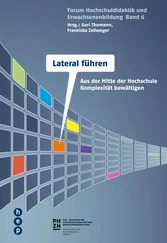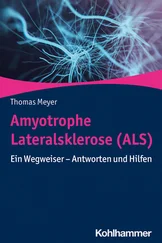54 54. Taylor, J.P., Brown, R.H. Jr., and Cleveland, D.W. (2016). Decoding ALS: from genes to mechanism. Nature 539 (7628): 197–206.
55 55. Brenner, D. and Weishaupt, J.H. (2019). Update on amyotrophic lateral sclerosis genetics. Curr Opin Neurol 32 (5): 735–739.
56 56. Corcia, P., Couratier, P., Blasco, H. et al. (2017). Genetics of amyotrophic lateral sclerosis. Rev Neurol (Paris) 173 (5): 254–262.
57 57. Leblond, C.S., Kaneb, H.M., Dion, P.A., and Rouleau, G.A. (2014). Dissection of genetic factors associated with amyotrophic lateral sclerosis. Exp Neurol 262 (Pt B): 91–101.
58 58. Mathis, S., Couratier, P., Julian, A. et al. (2017). Current view and perspectives in amyotrophic lateral sclerosis. Neural Regen Res 12 (2): 181–184.
59 59. Zufiria, M., Gil‐Bea, F.J., Fernandez‐Torron, R. et al. (2016). ALS: a bucket of genes, environment, metabolism and unknown ingredients. Prog Neurobiol 142: 104–129.
60 60. MacNair, L., Xiao, S., Miletic, D. et al. (2016). MTHFSD and DDX58 are novel RNA‐binding proteins abnormally regulated in amyotrophic lateral sclerosis. Brain 139 (Pt 1): 86–100.
61 61. Chia, R., Chiò, A., and Traynor, B.J. (2018). Novel genes associated with amyotrophic lateral sclerosis: diagnostic and clinical implications. Lancet Neurol 17 (1): 94–102.
62 62. Smith, B.N., Topp, S.D., Fallini, C. et al. (2017). Mutations in the vesicular trafficking protein annexin A11 are associated with amyotrophic lateral sclerosis. Sci Transl Med 9 (388): eaad9157.
63 63. Liu, X., Wu, C., He, J. et al. (2019). Two rare variants of the ANXA11 gene identified in Chinese patients with amyotrophic lateral sclerosis. Neurobiol Aging 74: 235 e9–e12.
64 64. Tsai, P.C., Liao, Y.C., Jih, K.Y. et al. (2018). Genetic analysis of ANXA11 variants in a Han Chinese cohort with amyotrophic lateral sclerosis in Taiwan. Neurobiol Aging 72: 188 e1–e2.
65 65. Zhang, K., Liu, Q., Liu, K. et al. (2018). ANXA11 mutations prevail in Chinese ALS patients with and without cognitive dementia. Neurol Genet 4 (3): e237.
66 66. Ferrara, D., Pasetto, L., Bonetto, V., and Basso, M. (2018). Role of extracellular vesicles in amyotrophic lateral sclerosis. Front Neurosci 12: 574.
67 67. Cooper‐Knock, J., Moll, T., Ramesh, T. et al. (2019). Mutations in the glycosyltransferase domain of GLT8D1 are associated with familial amyotrophic lateral sclerosis. Cell Rep 26 (9): 2298–2306. e5.
68 68. Consortium PMAS (2018). Project MinE: study design and pilot analyses of a large‐scale whole‐genome sequencing study in amyotrophic lateral sclerosis. Eur J Hum Genet 26 (10): 1537–1546.
69 69. Melamed, Z., Lopez‐Erauskin, J., Baughn, M.W. et al. (2019). Premature polyadenylation‐mediated loss of stathmin‐2 is a hallmark of TDP‐43‐dependent neurodegeneration. Nat Neurosci 22 (2): 180–190.
70 70. Klim, J.R., Williams, L.A., Limone, F. et al. (2019). ALS‐implicated protein TDP‐43 sustains levels of STMN2, a mediator of motor neuron growth and repair. Nat Neurosci 22 (2): 167–179.
71 71. Clark, J.A., Yeaman, E.J., Blizzard, C.A. et al. (2016). A case for microtubule vulnerability in amyotrophic lateral sclerosis: altered dynamics during disease. Front Cell Neurosci 10: 204.
72 72. Brenner, D., Yilmaz, R., Muller, K. et al. (2018). Hot‐spot KIF5A mutations cause familial ALS. Brain 141 (3): 688–697.
73 73. Nicolas, A., Kenna, K.P., Renton, A.E. et al. (2018). Genome‐wide analyses identify KIF5A as a novel ALS gene. Neuron 97 (6): 1268–1283. e6.
74 74. McCann, E.P., Williams, K.L., Fifita, J.A. et al. (2017). The genotype‐phenotype landscape of familial amyotrophic lateral sclerosis in Australia. Clin Genet 92 (3): 259–266.
75 75. Gibson, S.B., Figueroa, K.P., Bromberg, M.B. et al. (2014). Familial clustering of ALS in a population‐based resource. Neurology 82 (1): 17–22.
76 76. Ryan, M., Heverin, M., Doherty, M.A. et al. (2018). Determining the incidence of familiality in ALS: a study of temporal trends in Ireland from 1994 to 2016. Neurol Genet 4 (3): e239.
77 77. Hanby, M.F., Scott, K.M., Scotton, W. et al. (2011). The risk to relatives of patients with sporadic amyotrophic lateral sclerosis. Brain 134 (Pt 12): 3454–3457.
78 78. Chesi, A., Staahl, B.T., Jovicic, A. et al. (2013). Exome sequencing to identify de novo mutations in sporadic ALS trios. Nat Neurosci 16 (7): 851–855.
79 79. Conte, A., Lattante, S., Zollino, M. et al. (2012). P525L FUS mutation is consistently associated with a severe form of juvenile amyotrophic lateral sclerosis. Neuromuscul Disord 22 (1): 73–75.
80 80. Leblond, C.S., Webber, A., Gan‐Or, Z. et al. (2016). De novo FUS P525L mutation in Juvenile amyotrophic lateral sclerosis with dysphonia and diplopia. Neurol Genet 2 (2): e63.
81 81. Cady, J., Allred, P., Bali, T. et al. (2015). Amyotrophic lateral sclerosis onset is influenced by the burden of rare variants in known amyotrophic lateral sclerosis genes. Ann Neurol 77 (1): 100–113.
82 82. Giannoccaro, M.P., Bartoletti‐Stella, A., Piras, S. et al. (2017). Multiple variants in families with amyotrophic lateral sclerosis and frontotemporal dementia related to C9orf72 repeat expansion: further observations on their oligogenic nature. J Neurol 264 (7): 1426–1433.
83 83. van Blitterswijk, M., van Es, M.A., Hennekam, E.A. et al. (2012). Evidence for an oligogenic basis of amyotrophic lateral sclerosis. Hum Mol Genet 21 (17): 3776–3784.
84 84. Murphy, N.A., Arthur, K.C., Tienari, P.J. et al. (2017). Age‐related penetrance of the C9orf72 repeat expansion. Sci Rep 7 (1): 2116.
85 85. McGoldrick, P., Zhang, M., van Blitterswijk, M. et al. (2018). Unaffected mosaic C9orf72 case: RNA foci, dipeptide proteins, but upregulated C9orf72 expression. Neurology 90 (4): e323–e331.
86 86. Morgan, S., Shatunov, A., Sproviero, W. et al. (2017). A comprehensive analysis of rare genetic variation in amyotrophic lateral sclerosis in the UK. Brain 140 (6): 1611–1618.
87 87. Lattante, S., Ciura, S., Rouleau, G.A., and Kabashi, E. (2015). Defining the genetic connection linking amyotrophic lateral sclerosis (ALS) with frontotemporal dementia (FTD). Trends Genet 31 (5): 263–273.
88 88. Al‐Chalabi, A., Calvo, A., Chio, A. et al. (2014). Analysis of amyotrophic lateral sclerosis as a multistep process: a population‐based modelling study. Lancet Neurol 13 (11): 1108–1113.
89 89. Niccoli, T., Partridge, L., and Isaacs, A.M. (2017). Ageing as a risk factor for ALS/FTD. Hum Mol Genet 26 (R2): R105–R113.
90 90. Wanke, K.A., Devanna, P., and Vernes, S.C. (2018). Understanding neurodevelopmental disorders: the promise of regulatory variation in the 3'UTRome. Biol Psychiatry 83 (7): 548–557.
91 91. Shaul, O. (2017). How introns enhance gene expression. Int J Biochem Cell Biol 91 (Pt B): 145–155.
92 92. Sabatelli, M., Moncada, A., Conte, A. et al. (2013). Mutations in the 3′ untranslated region of FUS causing FUS overexpression are associated with amyotrophic lateral sclerosis. Hum Mol Genet 22 (23): 4748–4755.
93 93. Liu, E.Y., Russ, J., Wu, K. et al. (2014). C9orf72 hypermethylation protects against repeat expansion‐associated pathology in ALS/FTD. Acta Neuropathol 128 (4): 525–541.
94 94. Xi, Z., Zinman, L., Moreno, D. et al. (2013). Hypermethylation of the CpG island near the G4C2 repeat in ALS with a C9orf72 expansion. Am J Hum Genet 92 (6): 981–989.
95 95. McMillan, C.T., Russ, J., Wood, E.M. et al. (2015). C9orf72 promoter hypermethylation is neuroprotective neuroimaging and neuropathologic evidence. Neurology 84 (16): 1622–1630.
96 96. Xi, Z., Zhang, M., Bruni, A.C. et al. (2015). The C9orf72 repeat expansion itself is methylated in ALS and FTLD patients. Acta Neuropathol 129 (5): 715–727.
97 97. Bauer, P.O. (2016). Methylation of C9orf72 expansion reduces RNA foci formation and dipeptide‐repeat proteins expression in cells. Neurosci Lett 612: 204–209.
Читать дальше

![Ники Сегнит - Тезаурус вкусов 2. Lateral Cooking [litres]](/books/430786/niki-segnit-tezaurus-vkusov-2-lateral-cooking-li-thumb.webp)



